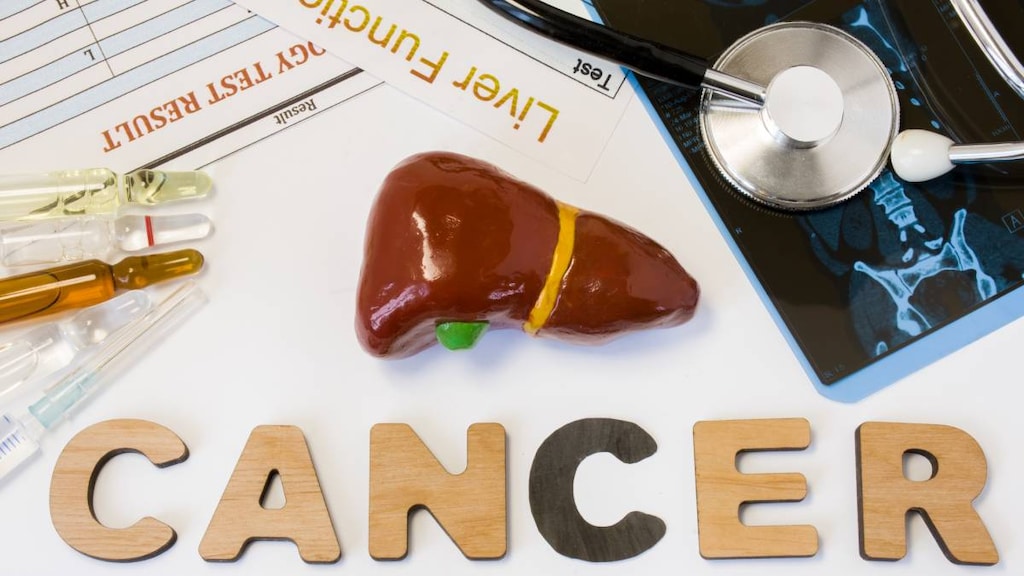Liver Cancer: Diagnosis and Testing Options

If you or a loved one is diagnosed with liver cancer, it can be difficult news. Not only is a cancer diagnosis always challenging, but liver cancer is one of the most deadly. Worldwide, more than 700,000 people die from liver cancer each year. This type of cancer is less common in the United States, but the American Cancer Society estimates there will be more than 40,000 new cases of liver cancer and more than 30,000 deaths from liver cancer in 2020.
Overview of liver cancer
Considering its high risk, identifying liver cancer or its risk factors early is particularly important. If the cancer can be detected and treated very early on, that greatly improves the prognosis.
The most common type of liver cancer is known as hepatocellular carcinoma (HCC), but a number of other variations are also possible. These include intrahepatic cholangiocarcinoma (bile duct cancer), angiosarcoma, hemangiosarcoma and hepatoblastoma. Liver cancer can also be a secondary form of cancer. This means that it develops elsewhere in the body and then spreads to the liver.
Diagnosing liver cancer
One of the challenges of liver cancer is that it often has no early signs and symptoms, the American Cancer Society says. This means that by the time someone learns they have liver cancer, the disease may have already progressed to an advanced stage. For this reason, your doctor may recommend liver cancer screening if he or she determines that you might be at high risk for developing the disease.
People at high risk for liver cancer include those with:
- Cirrhosis of the liver
- Chronic hepatitis B or C infection
- Hereditary hemochromatosis
- Other inherited liver diseases
- Diabetes
- Excess alcohol consumption
- Fatty liver disease
- Exposure to aflatoxins (poisons produced by molds on stored crops)
If your doctor suspects that you might be at risk for liver cancer, there are a number of tests that can be used to make a diagnosis. According to the American Cancer Society, liver cancer testing options include:
- Blood tests: Blood tests are one of the most common ways to check for the presence of liver cancer. A typical blood test used for liver cancer is the alpha-fetoprotein (AFP) blood test. AFP is a protein that can show up in high levels in people with the hepatocellular carcinoma type of liver cancer. However, liver cancer is not the only factor that can raise AFP levels, so other testing is needed to determine the presence of liver cancer.
- Other blood tests that a doctor may order for liver cancer include blood clotting tests, complete blood count (CBC) tests, liver function tests and kidney function tests. These tests can be used to further confirm a diagnosis of liver cancer or help determine how the liver is functioning as part of figuring out the right cancer treatment.
- Imaging tests: In addition to blood testing, one or more imaging tests may be used to further confirm a liver cancer diagnosis. Your doctor may suggest the following imaging tests, depending on your specific circumstances:
- Abdominal Ultrasound: This is typically the first imaging test used if liver cancer is suspected. If a tumor is present in the liver, the test should show it clearly.
- Computed tomography (CT): If it’s determined that a tumor is present, a CT scan of the abdomen may provide a clearer picture of the location, size and shape of the tumor. It is also often used to guide a needle or other medical equipment when the doctor is performing a biopsy, or it can be used to see if the cancer has spread to other areas of your body.
- Bone scan: If there’s a chance that liver cancer has spread to your bones, then your doctor may order a bone scan. This may be called for if you have bone pain or if your doctor is trying to determine if you’re a good candidate for a liver transplant.
- Angiography: If liver cancer is clearly present, but your doctors need further guidance in determining how to treat it, an angiography may be appropriate. This test involves first using a catheter to inject a dye into the artery leading into your liver. This dye fills the veins of the liver, which show up on an X-ray and tell doctors how blood is flowing to the liver. This helps them figure out if a liver cancer tumor can be removed safely.
- Magnetic resonance imaging (MRI): MRI is a highly advanced medical imaging tool that can provide more detail about a liver tumor, if needed. For example, an MRI may determine, simply through its imaging, whether a liver tumor is malignant (cancerous) or benign (noncancerous). An MRI can also help determine how far liver cancer has spread.
- Biopsy: If the results of blood and imaging tests indicate that liver cancer may be present, then a biopsy is the likely next step in diagnosis. A biopsy is a sample of tissue that is obtained from the body to check for cancer. For liver cancer, this sample can be gathered using a needle, during a laparoscopy or with a surgical procedure. However, unlike most other cancers, some forms of liver cancer do not require a biopsy if the X-rays and labs have all the features of a hepatocellular carcinoma.
Liver cancer stages
Diagnostic testing is also helpful in determining the stage of someone’s liver cancer, meaning how far it has progressed. This is largely done with imaging tests, like MRIs and CTs. Like many cancers, liver cancer is ranked in stages according to its severity, with stage 1A being the least severe and stage 4B being the most severe, the American Cancer Society says. The stage of liver cancer is based on a number of factors, including how large the tumor is, how many tumors are present and how far the cancer has spread.
Treating liver cancer
A variety of treatments may be used for liver cancer, although the most successful by far is a liver transplant. However, a transplant is usually viable only for people with early stage liver cancer. When it’s successful, the survival rate after five years is 60 to 70 percent. That's much higher than the survival rate for people with liver cancer who do not undergo a transplant.
Still, a number of other treatments can be used to shrink liver cancer tumors or slow the spread of the cancer to other areas of the body. Those options, according to the Mayo Clinic, include:
- Heating (radiofrequency ablation) or freezing (cryoablation) cancer cells
- Chemotherapy
- Alcohol injections
- Targeted therapy
- Immunotherapy (biological therapy)
- Radiation
Supportive, or palliative, care is also important for liver cancer treatment. This form of care focuses on reducing side effects and improving the quality of life for people who are coping with the symptoms of liver cancer, as well as the side effects of the treatments.
Liver cancer prognosis
While there’s always a chance of curing the cancer and surviving, the reality with liver cancer is that the prognosis is often not good. Currently, the treatment that offers the best chance of surviving five years after a liver cancer diagnosis is a liver transplant.
If someone has a localized form of liver cancer that remains in the liver, the chance of survival after five years is 31 percent. For regional and distant forms of liver cancer, the five-year survival rate drops to 11 and 2 percent, respectively.
The bottom line
A number of different tests are available to achieve a correct diagnosis of liver cancer and provide information that can guide treatment. But, when it comes to successful treatment of liver cancer, your best bet is to get an early diagnosis and start treatment as soon as possible.
Article references
- Key Statistics about Liver Cancer, American Cancer Society, 2019, https://www.cancer.org/cancer/liver-cancer/about/what-is-key-statistics.html
- What Is Liver Cancer?, American Cancer Society, 2019, https://www.cancer.org/cancer/liver-cancer/about/what-is-liver-cancer.html
- Can Liver Cancer Be Found Early?, American Cancer Society, 2019, https://www.cancer.org/cancer/liver-cancer/detection-diagnosis-staging/detection.html
- Liver Cancer, Mayo Clinic, 2019, https://www.mayoclinic.org/diseases-conditions/liver-cancer/diagnosis-treatment/drc-20353664
- Tests for Liver Cancer, American Cancer Society, 2019, https://www.cancer.org/cancer/liver-cancer/detection-diagnosis-staging/how-diagnosed.html
- Liver Cancer Stages, American Cancer Society, 2019, https://www.cancer.org/cancer/liver-cancer/detection-diagnosis-staging/staging.html
- Liver Cancer Survival Rates, American Cancer Society, 2019, https://www.cancer.org/cancer/liver-cancer/detection-diagnosis-staging/survival-rates.html
- American Association for the Study of Liver Diseases, Hepatology, 2018 https://www.aasld.org/sites/default/files/2019-06/AASLD_2018_HCC_Guidance_on_Diagnosis%2C_Staging_and_Management_hep_29913%20%281%29.pdf



